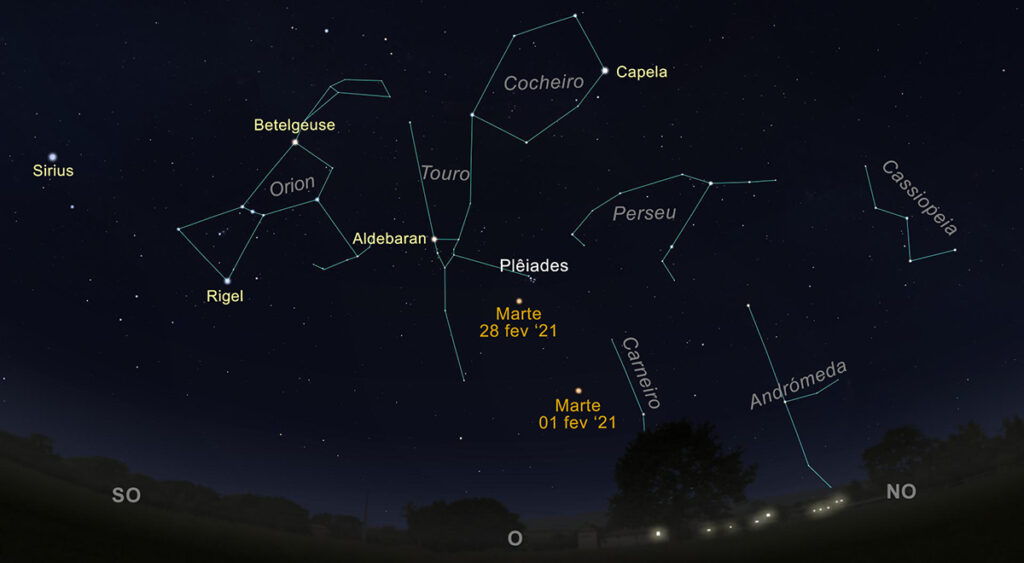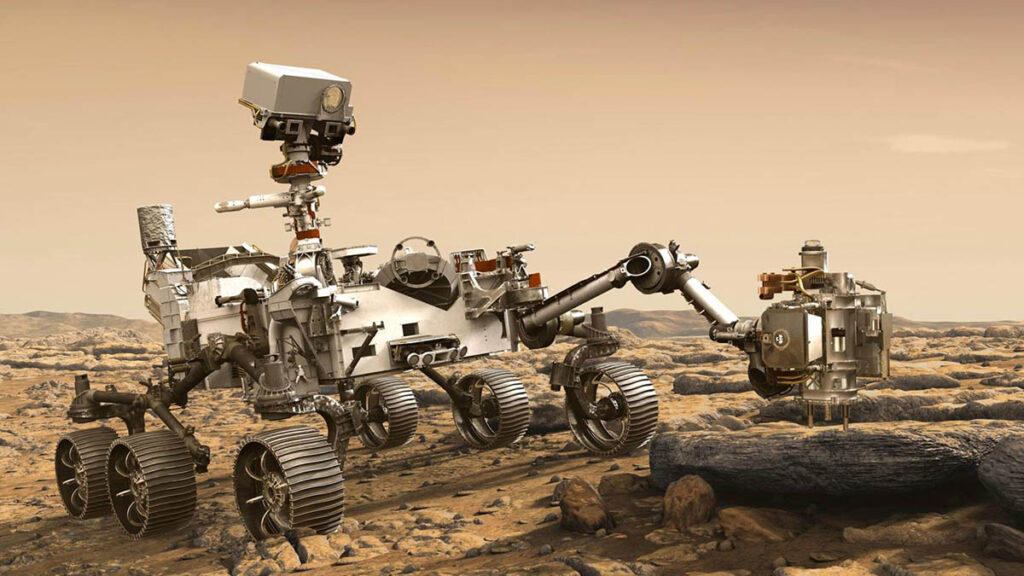To the sky, it doesn't matter if we are in confinement or not, so here is the sky of this February 2021, for you to see from your windows, balconies or backyards.
During the shortest month of the year, the only planet that is easy to observe is Mars. At dusk, it faces south, almost at the zenith (the point of the sky above our heads) and is visible until around one in the morning.
Over the course of the month, the planet (apparently) moves about 15 degrees and, in the sky, passes from the constellation Aries to the Taurus. At the end of February and beginning of March, you will be very close to the “flies” of the Taurus, the open swarm of stars of the Pleiades.
Also known as the seven sisters or the “seven stars” (because of the number of stars in the swarm that are easily visible, even in light-polluted skies), the Pleiades do not form a constellation, although they are sometimes confused with the Ursa Minor.
The Moon, on the other hand, reaches the waning quarter phase on the 4th, and a week later, the 11th is the day of the new moon. Without the moon's glow, take the opportunity to look for the constellations of Andromeda and Orion, because in each of these, there is a deep-sky object, visible to the naked eye in dark skies (or with binoculars, in cities) – the Nebula of Orion and the Andromeda Galaxy. Around 20:00, the constellations are facing, respectively, to the South and the West.
The Orion Nebula, a cluster of gas and dust about 30 light-years across, is one of the largest motherhouses of nearby stars. Tens of millions of years from now, it will give rise to a cluster of stars similar to the Pleiades.
The Andromeda Galaxy is about 2,5 million light years away, but fast approaching. In about 4 billion years, it will collide and merge with the Milky Way, giving rise to a giant elliptical galaxy.
On the 18th, the Moon passes about 5 degrees from Mars in the sky. And that day, Perseverance lands on Mars, NASA's rover that carries the names of nearly 11 million terrestrials (mine included), engraved on 3 fingernail-sized silicon chips.
The Perseverance “cart” is an authentic autonomous laboratory on wheels, the size of an all-terrain vehicle. In Jezero Crater, he will look for signs of ancient microbial life. It will also test technology to transform carbon dioxide into oxygen, which will be essential for future human exploration (or even, perhaps, colonization) of Mars.
On the 19th, the Moon reaches the waning quarter and at dawn the following day, the early risers have the challenge of observing the month:
the planets Jupiter and Saturn, which have just crossed the Sun and become visible at dawn, join the planet Mercury, which is moving away from the Sun by the end of the month, to form a triangle in the sky.
The problem? Jupiter only rises at 6:45 am, already enveloped by the sun's brightness, which is also not long in rising, with Mercury, the highest of the three, just 5 degrees above the horizon!
February 27th is the day of the full moon and, to end the month, on the 28th, just before dawn, Mercury reaches the highest point in the sky.
Be sure to watch the sky, but safely at home. And if you do have to go out, keep your distance, adhere to breathing etiquette, wear a certified mask that covers your nose to chin and wash your hands frequently with soap.
With everyone's collaboration, (hopefully) in the near future, we will come together again, by the dozens or hundreds, on many great nights of sky observation.
Good observations.

Author Ricardo Cardoso Reis (Porto Planetarium and Institute of Astrophysics and Space Sciences)
Help us to do the Sul Informação!
Contribute your donation so that we can continue to make your journal!
Click here to support us (Paypal)
Or use our IBAN PT50 0018 0003 38929600020 44



















Comments